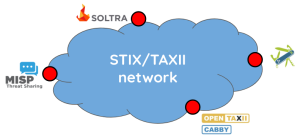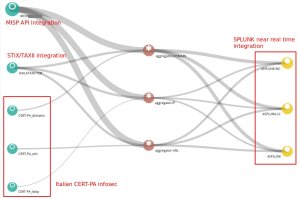This post is the third of a series on Threat Intelligence Automation topic.
Post 1: Architecture and Hardening of MineMeld
Post 2: Foundation: write a custom prototype and SOC integration
Post 4: Search received IoC events with Splunk
Post 5: Connect to a TAXII service
After building the architecture and integrating the InfoSec feeds from italian CERT-PA into MineMeld and the near-real-time SOC engine, it’s time to put another brick to build an effective community: export internal IoC to the community in a standard format so authorized parties can get it and use them as they want.

The ultimate goal is to build a community that can share IoC using a standard language and a transport mechanism (STIX/TAXXI) getting data from heterogeneous sources (more integration examples in next posts) and injecting data into the community network.
So let’s start with the configuration steps. Continue reading “MineMeld: threat intelligence automation – export internal IoC to the community [3]”



